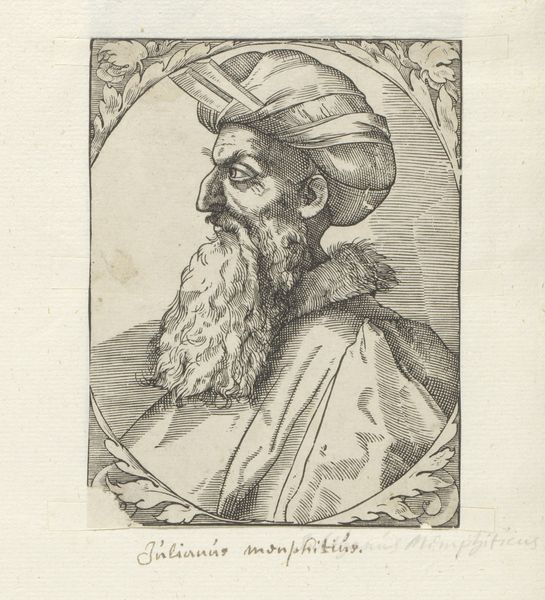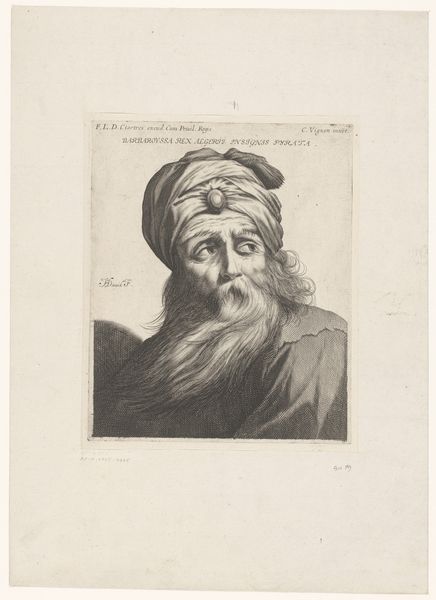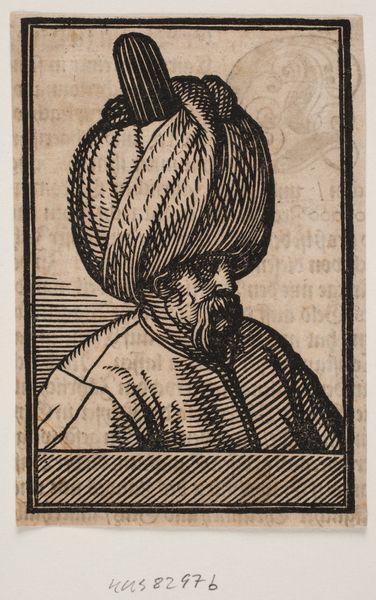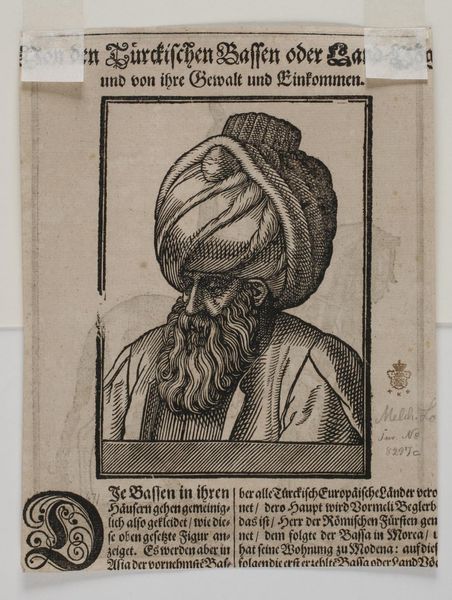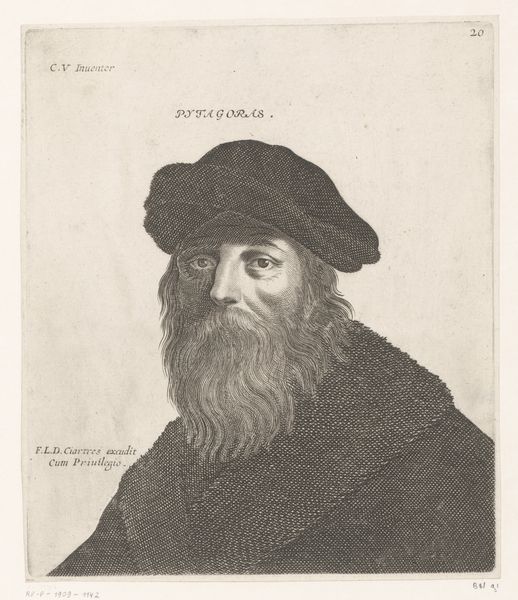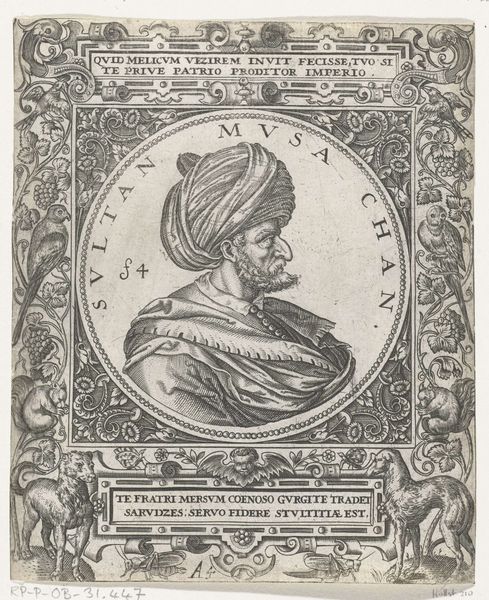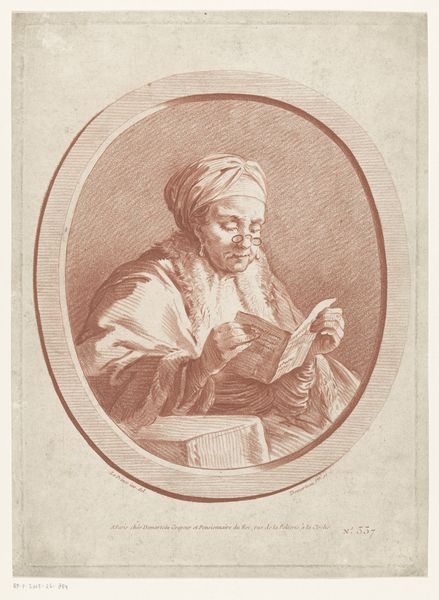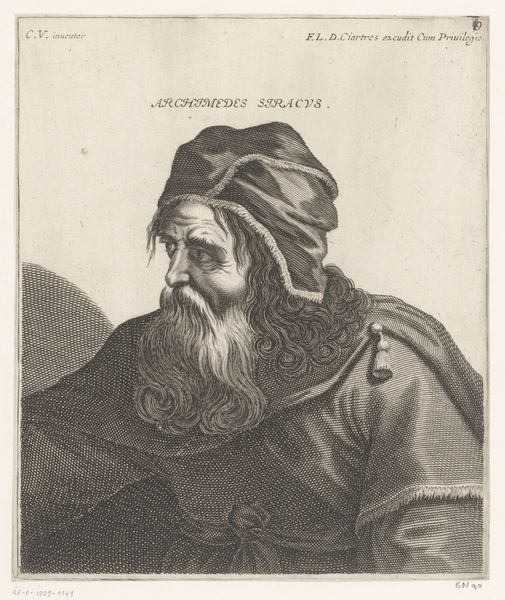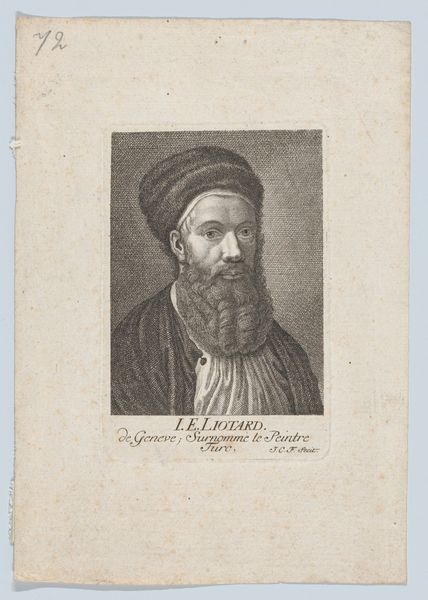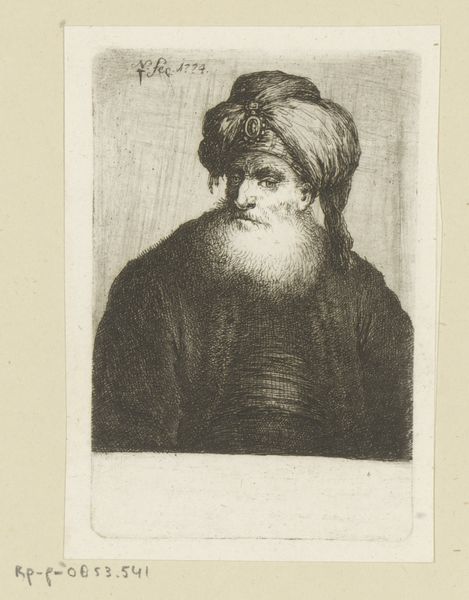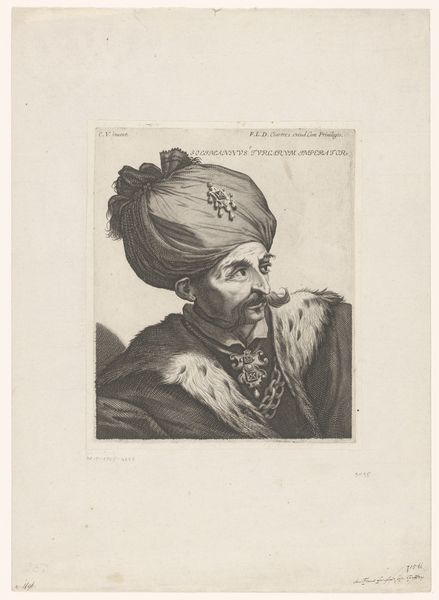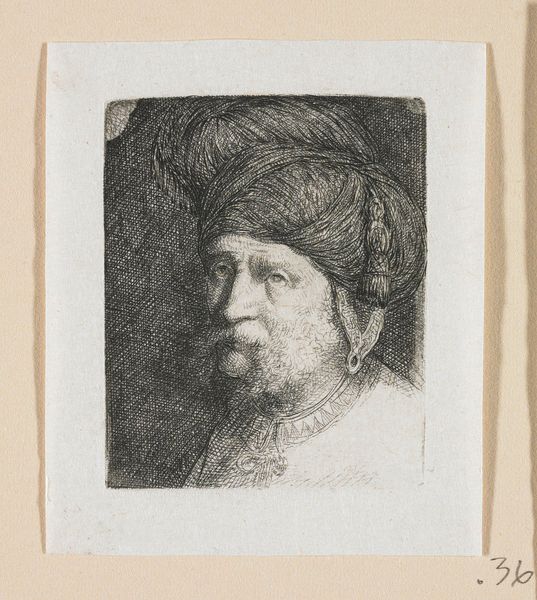
print, engraving
#
portrait
#
baroque
# print
#
history-painting
#
engraving
Dimensions: height 193 mm, width 120 mm
Copyright: Rijks Museum: Open Domain
Curator: Here we have Pieter Casteleyn's 1653 engraving, "Portret van tsaar Michaël Fjodorovitsj Romanov"—a portrait of Tsar Michael of Russia. Editor: My first thought is the intriguing contrast of textures—the soft, flowing lines of his turban versus the rigid, diamond-shaped frame. There's a formality, almost austerity, communicated through these juxtaposed visual elements. Curator: Absolutely. Casteleyn’s engraving technique relies on strong lines and hatching to build form and volume. The stark contrast emphasizes the Tsar’s regal bearing. Note also the use of the lozenge to suggest a window or portal to the subject. Editor: That window metaphor is intriguing. Looking closely, I see a man caught between worlds—the exotic East implied by his headdress, versus the European expectations of monarchy communicated through the very baroque sensibility of the rendering. The eyes, with their intense gaze, seem to hold some burden of reconciling those tensions. Curator: That tension, I believe, exists within the technical elements as well. The line quality varies significantly throughout the portrait; softer, more atmospheric marks render the turban, while more rigid parallel marks sculpt the face. It lends a complexity to what at first appears to be a fairly straightforward portrait. Editor: Indeed. Beyond the formal composition, the very act of depicting this Tsar in such a manner signifies a bridging of cultures, a European fascination, perhaps, with the exotic other. What was Casteleyn’s cultural lens? Curator: The inscription below, stating Casteleyn's Haarlem origin, might imply an active Northern European merchant culture keen to record, document, or translate other cultures through the reproducible format of printmaking. Editor: So, in essence, the symbolism lies not only in what is represented but also in the act of representation itself, suggesting the dynamics of cultural exchange during the Baroque era. Curator: Precisely. It brings forth the notion of the artistic construction of the sitter and his cultural persona for distant viewership. Editor: This little print suddenly unveils larger perspectives than its size suggests. Thank you. Curator: It has been my pleasure. A deceptively complex image of cultural politics made accessible.
Comments
No comments
Be the first to comment and join the conversation on the ultimate creative platform.

